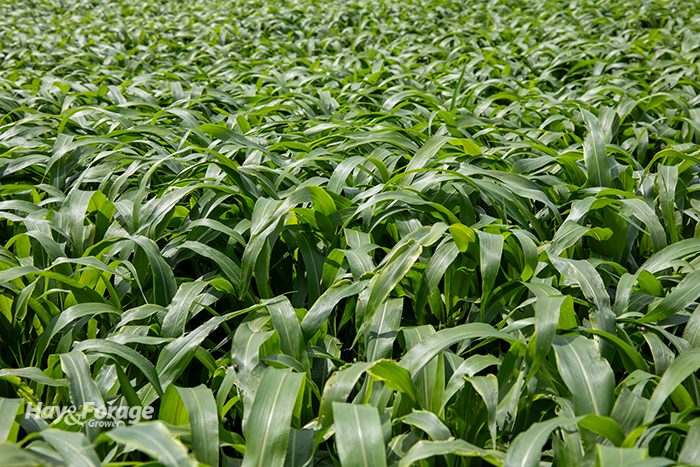
As the summer progresses, perennial forage production will start to slide downward on the forage growth curve. Having a warm-season annual at the ready to graze or harvest when cool-season grasses go dormant can fill this gap in forage supplies.
There are several species of annual forage that can help mitigate the summer slump. According to Valerie Tate with University of Missouri Extension, sorghum-sudangrass and pearl millet are particularly high yielding.
“When moisture and soil nutrients are readily available, sorghum-sudangrass and pearl millet can produce up to 6 tons of forage per acre during the growing season,” the agronomy field specialist asserts.
Start seeding now
The planting window for sorghum-sudangrass is mid-May to late June. Tate notes sorghum-sudangrass prefers a soil pH above 5.5 and should be seeded at a depth of 1/2 to 1 inch. Drill forage at a rate of 20 to 25 pounds per acre or broadcast seed at 30 to 35 pounds per acre.
Pearl millet has a similar planting window and seeding depth as sorghum-sudangrass, but is more tolerant to lower soil pH. Drill this forage at a rate of about 15 pounds per acre or broadcast seed at 20 to 30 pounds per acre.
Aim to graze or harvest sorghum-sudangrass or pearl millet when plants are 24 to 36 inches tall, which Tate says can occur in as few as 45 days after planting. Allowing plants to grow much taller will result in significantly lower forage quality. To maximize regrowth, leave a 10-inch stubble height and consider applying 40 to 60 pounds of nitrogen to the stand — except during a dry period.
“To minimize the risk of nitrate poisoning when conditions are dry and forage growth is slow, delay additional applications of nitrogen fertilizer until adequate moisture is available for rapid plant regrowth,” Tate states.
In addition to nitrogen poisoning, prussic acid poisoning can occur in sorghum-sudangrass under environmental stress. Avoid grazing plants up to two weeks after they experience damage from drought, frost, or hail.
Bet on baleage
Sorghum-sudangrass and pearl millet can also be harvested for hay, although it can be difficult to dry these forages down to a proper moisture level because of their coarse stems. Therefore, making baleage could be a good alternative.
Cut forage and allow it to wilt to 45% to 60% moisture before baling. Tate says this could take anywhere from six to 24 hours, depending on forage species, crop yield, swath density, and weather. Then, wrap bales within four hours of baling to exclude oxygen and initiate fermentation, which can take up to six weeks to complete.
Tate provides the following tips for making baleage with summer annuals:
• Make tight, dense bales to eliminate as much oxygen as possible.
• Bind bales with plastic twine or net wrap rather than treated sisal twine, which can break down baleage plastic.
• Wrap bales with six layers of 1-mil white plastic.
• Store bales in a well-drained area near the feeding area.
• Check for tears in the plastic and repair them with silage tape to avoid spoilage.
The agronomy field specialist also recommends making bales smaller when forage moisture is higher on the baleage spectrum to account for heavier bale weights compared to when forage is drier.

